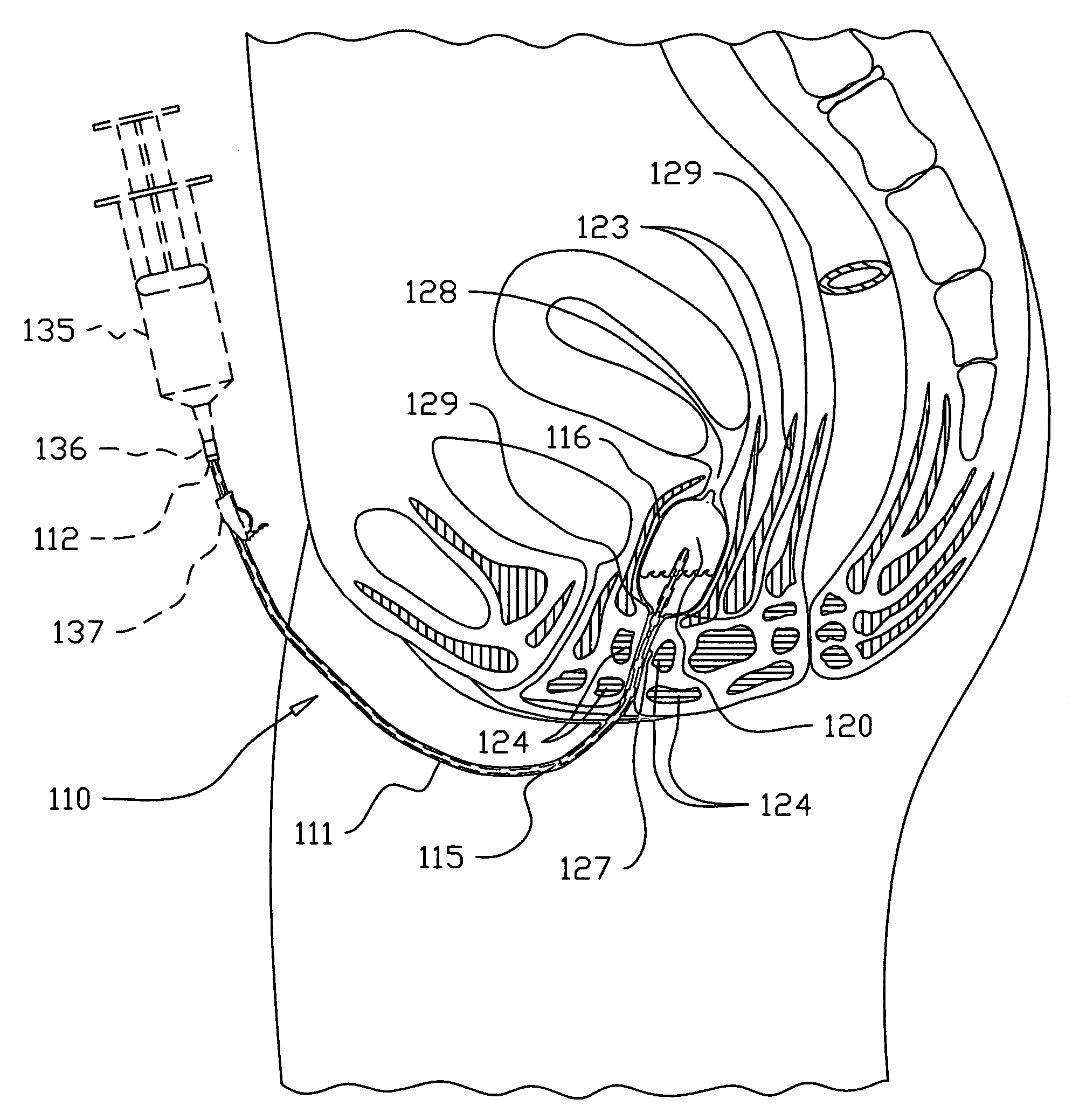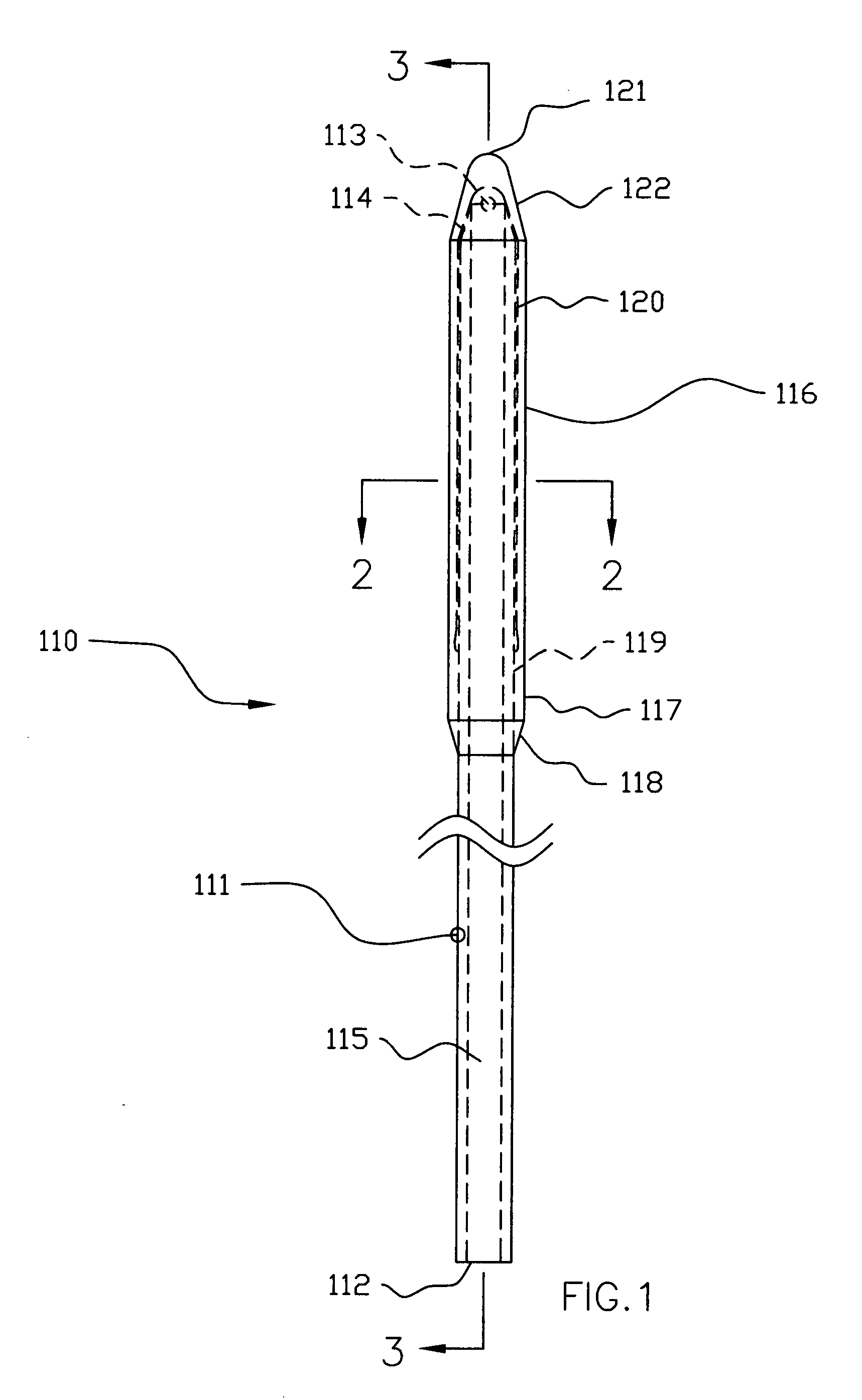Exercise device and method for testing and/or strengthening muscles of the pelvic diaphragm
a technology of pelvic diaphragm and exercise device, which is applied in the direction of medical devices, balloon catheters, weights, etc., can solve the problems of women's discomfort or even pain, devices that do not provide suitable resistance to vaginal muscle contraction, and the public is unwilling to utilize the current devices and methods for strengthening these particular muscles, so as to prevent the need for medication, increase the muscle mass and strength of the pelvic diaphragm muscle structur
- Summary
- Abstract
- Description
- Claims
- Application Information
AI Technical Summary
Benefits of technology
Problems solved by technology
Method used
Image
Examples
second embodiment
[0138]A second embodiment, generally indicated as exercise device 210, is configured in much the same manner as the preferred embodiment of FIGS. 1-7. In this embodiment, shown in FIGS. 10-14, a balloon member 216 covers a tube 211 from a second end 213 to a first end 212, having a seal 219 that extends from a reservoir 220 to first end 212.
[0139]A third embodiment, generally indicated as exercise device 310, is configured in a similar manner as the second embodiment of FIGS. 10-14. In this embodiment, shown in FIGS. 15-19, a tube 311 is a single-layered hose that is approximately 0.375 inches in diameter, having a first end 312 and a tip end 321. Tip end 321 has a tip taper 322 that is similar to tip taper 122 in FIG. 1. An elongated passageway 315 that is approximately 0.125 inches in diameter, but the diameter may be varied as long as resistance to expansion is maintained, extends from first end 312 to a sharp-angled cut or reservoir edge 339. A reservoir 320 that is approximatel...
fourth embodiment
[0140]A fourth embodiment, generally indicated as exercise device 410, is configured in an inverse manner as the preferred embodiment of FIGS. 1-7. In this embodiment, shown in FIGS. 20-24, a tube 411 is an elastic hose or resilient tube having a first end 412 and a tip end 421. Tip end 421 has a tip taper 422 that is similar to tip taper 122 in FIG. 1. An elongated passageway 415 extends longitudinally through tube 411 from first end 412 to tip end 421. A non-expandable cover 440 is a semi-rigid hose having a first cover end 441 and a second cover end 442. Second cover end 442 has a bevel 418 around the outer edge. First end 412, having a diameter smaller than that of non-expandable cover 440, is inserted into non-expandable cover 440 from second cover end 442 to first cover end 441. Tube 411 is joined to non-expandable cover 440 by a seal 419 that extends from second cover end 442 to first cover end 441. Tube 411 extends beyond second cover end 442 approximately 0.5 to 3.0 inches,...
fifth embodiment
[0141]A fifth embodiment, generally indicated as exercise device 510, is configured in a similar manner as the preferred embodiment of FIGS. 1-7. In this embodiment, shown in FIGS. 25-29, a tube 511 has a first end 512 and a second end 513. A hole 543 that is approximately 0.09375 inches in diameter, but the diameter may be varied as long as ease of water or air flow is maintained, is cut into tube 511 approximately 1.0 to 3.0 inches from second end 513, thereby allowing water or air to flow through a passageway 515. A resilient tube or expandable cover 544 has a first cover end 541 and a second cover end 542 that is approximately 3.0 to 6.0 inches in length and 0.3125 inches in diameter, but the length and diameter may be varied as long as comfort and ease of use is maintained, that covers tube 511 from second end 513 to a seal 519 that is similar to seal 119 in FIG. 1. First cover end 541 is joined to second end 513 by a second seal 545 that is similar to seal 519, forming a reser...
PUM
 Login to View More
Login to View More Abstract
Description
Claims
Application Information
 Login to View More
Login to View More - R&D
- Intellectual Property
- Life Sciences
- Materials
- Tech Scout
- Unparalleled Data Quality
- Higher Quality Content
- 60% Fewer Hallucinations
Browse by: Latest US Patents, China's latest patents, Technical Efficacy Thesaurus, Application Domain, Technology Topic, Popular Technical Reports.
© 2025 PatSnap. All rights reserved.Legal|Privacy policy|Modern Slavery Act Transparency Statement|Sitemap|About US| Contact US: help@patsnap.com



